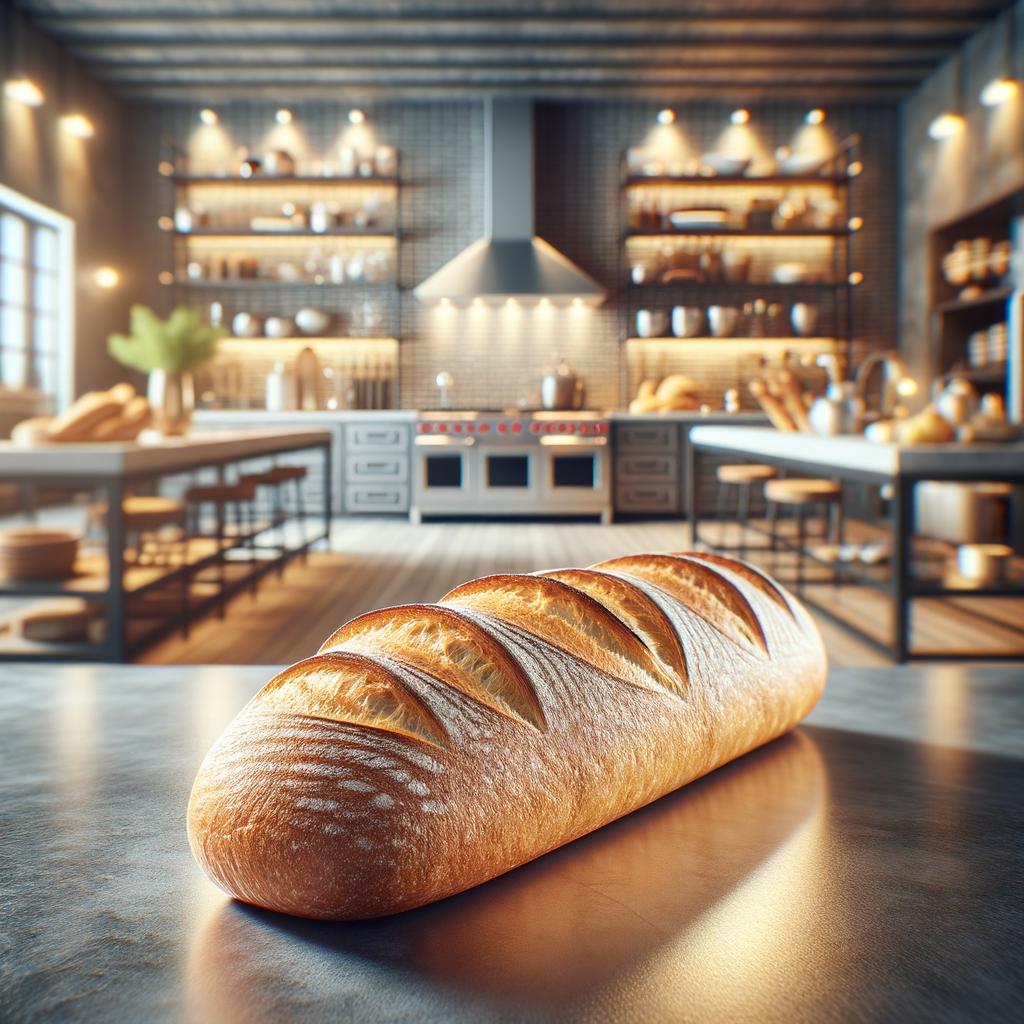Fresh Baguette

Description
The baguette, a quintessential symbol of French culture, is a long, thin loaf of bread that is as delightful to the eyes as it is to the palate. Its exterior is a beautiful golden brown, boasting a crust that's crispy and crackling to the touch, while its interior reveals a soft, airy, and slightly chewy texture. The flavor profile of a fresh baguette is subtly sweet and nutty, with a hint of yeasty aroma that is both comforting and enticing. The baguette's unique characteristic lies in its shape - a long, slender loaf, typically about two feet in length, but can be up to a yard or more. It's this distinctive shape that sets it apart from other breads.
Primary Uses
The baguette is a versatile player in the culinary world. It is often sliced and served with butter, cheeses, or jams for a simple yet satisfying breakfast or snack. In France, it's a staple at every meal, used as an edible utensil to push food onto the fork. It also serves as the backbone for a variety of sandwiches, most notably, the classic French sandwich, the Jambon-Beurre. Outside of culinary uses, the baguette holds a significant cultural role in France, where it's not just a bread, but a way of life.
History
The history of the baguette is as rich as its flavor. Its origin is often attributed to the 19th century, when a law prohibited bakers from working before dawn, thus leading them to bake this quick-cooking loaf. However, some food historians argue that it's a much older bread, dating back to the 18th century. Regardless of its exact origin, the baguette has become a symbol of French identity and pride. Over time, its popularity has spread worldwide, with each culture adding its own twist to this classic bread. A popular folklore suggests that the baguette was designed so that soldiers could carry them easily in the legs of their trousers during wars.
Nutritional Information
A fresh baguette, while a delight to the senses, is not just an empty source of calories. It provides a substantial amount of carbohydrates, making it a good source of quick energy. It also contains small amounts of protein and fiber. However, it is low in fat and sugar, making it a healthier choice compared to many other types of bread. While it doesn't have the same level of vitamins and minerals as whole grain breads, it can still be part of a balanced diet. Moderation is key, as with all foods, when enjoying this delicious French staple.

